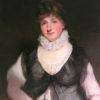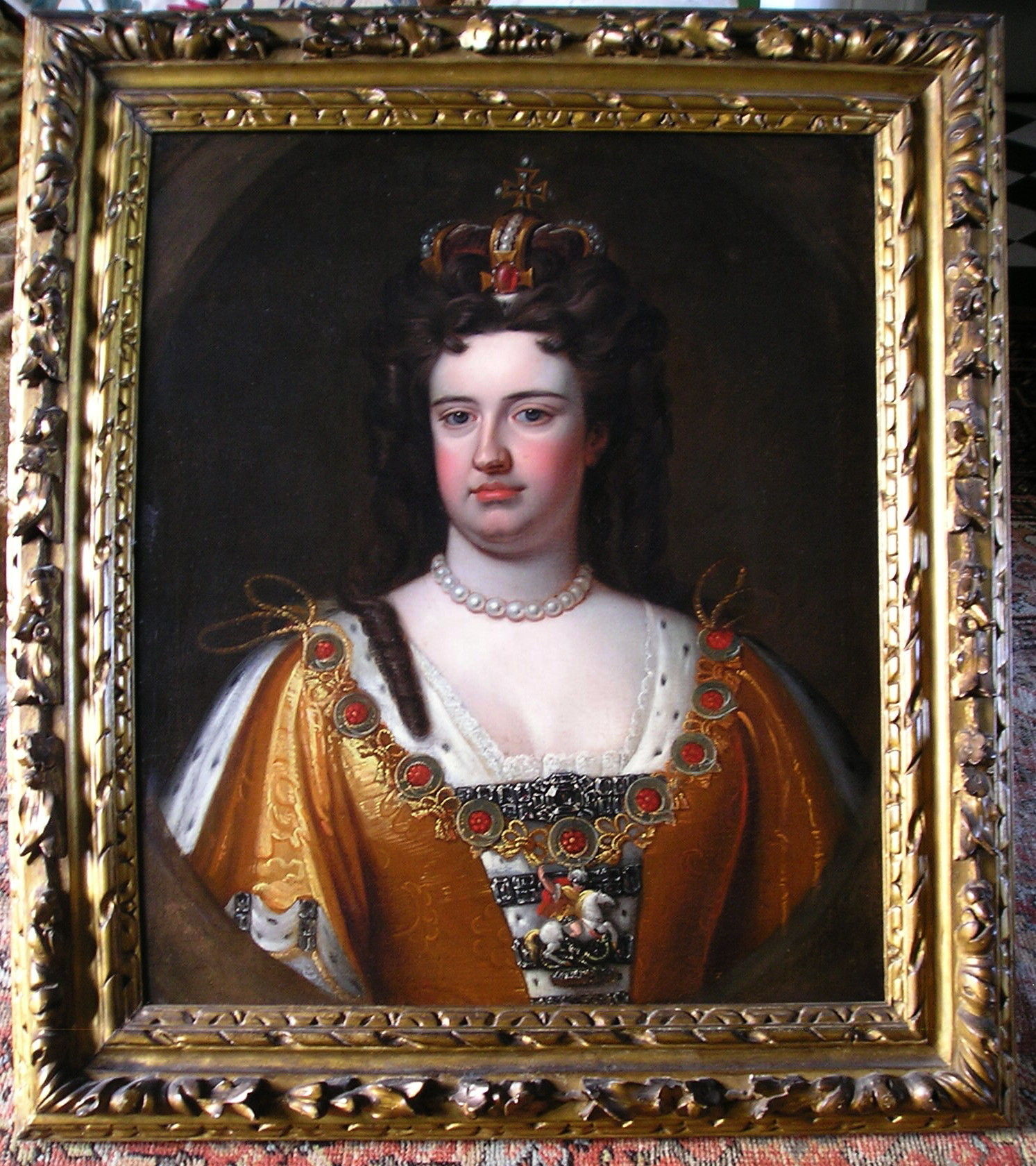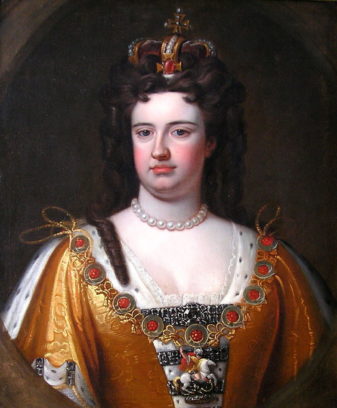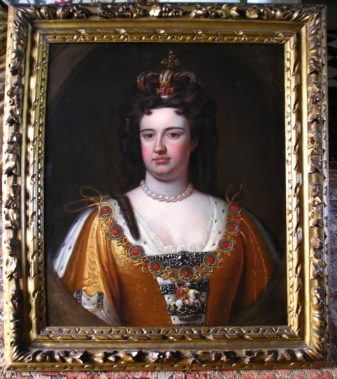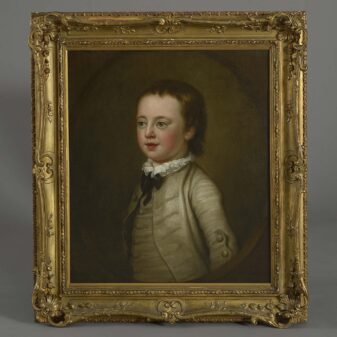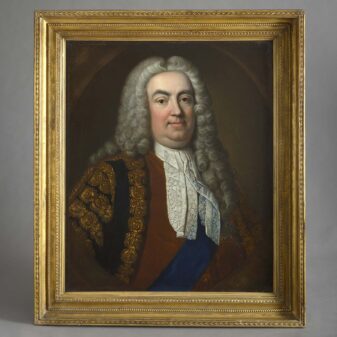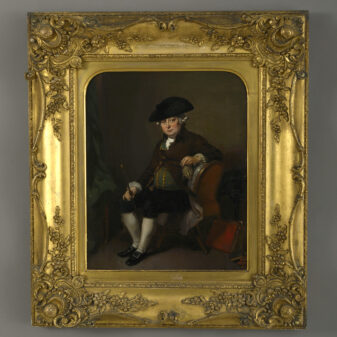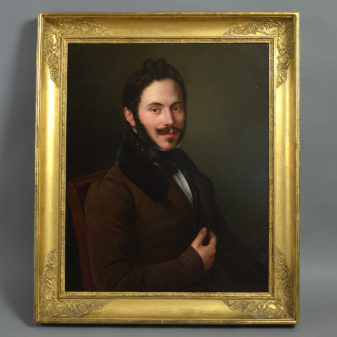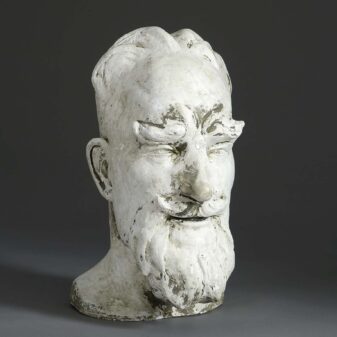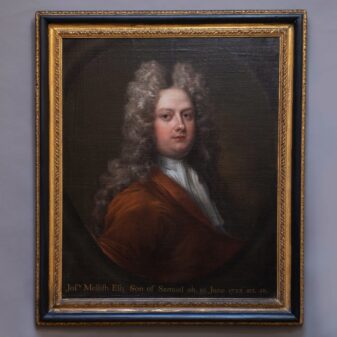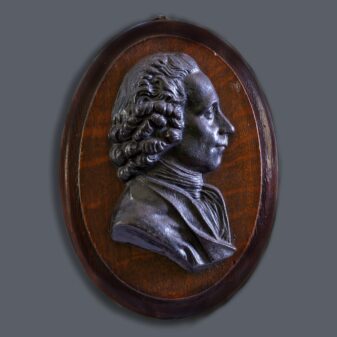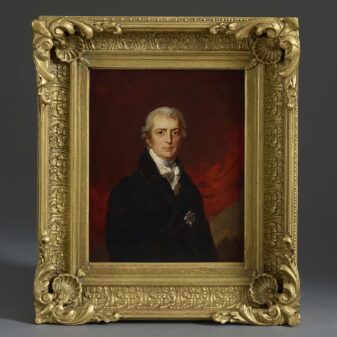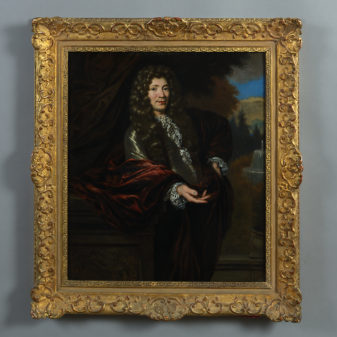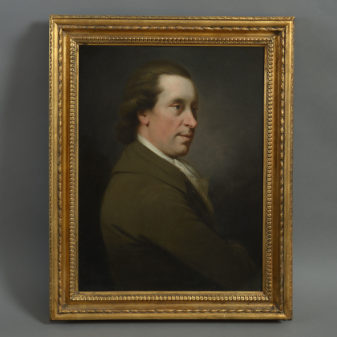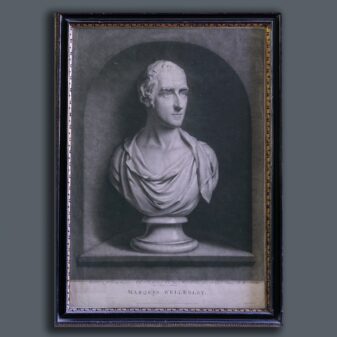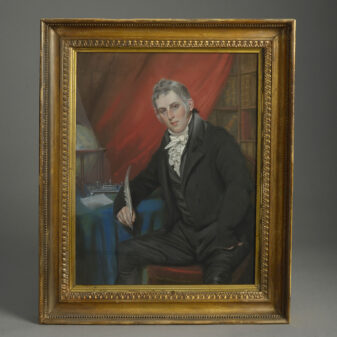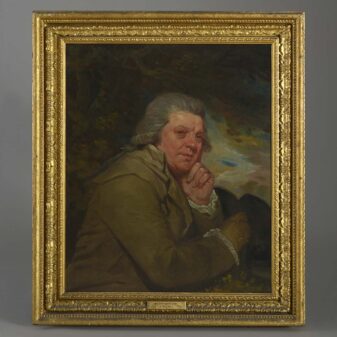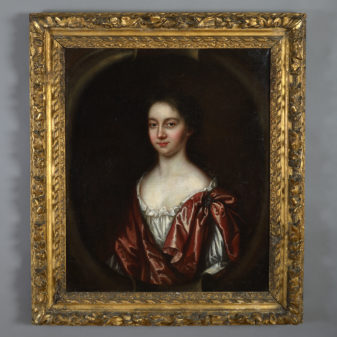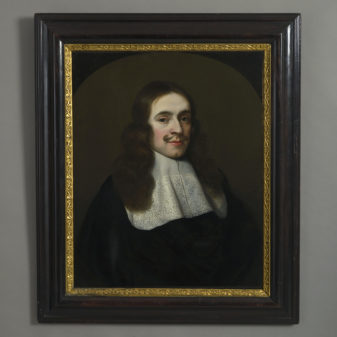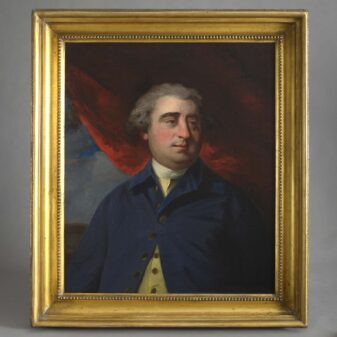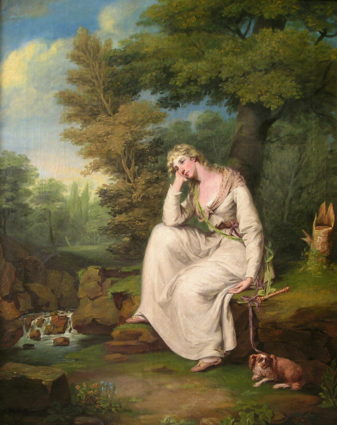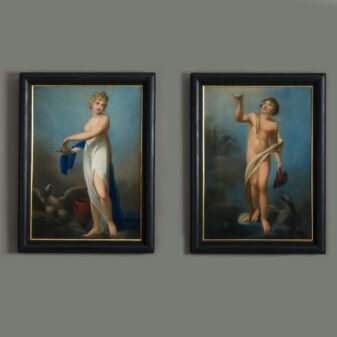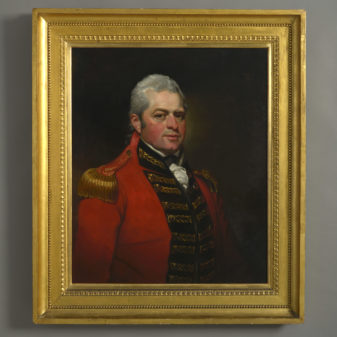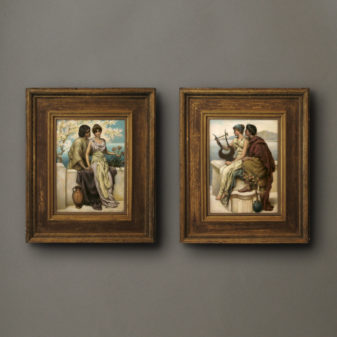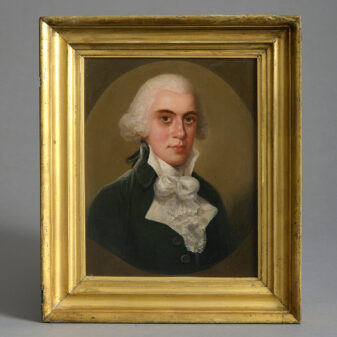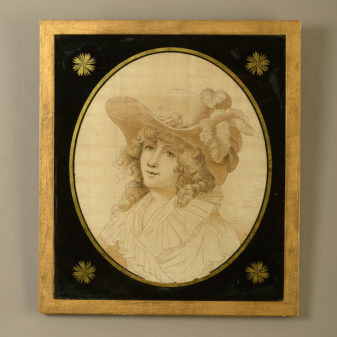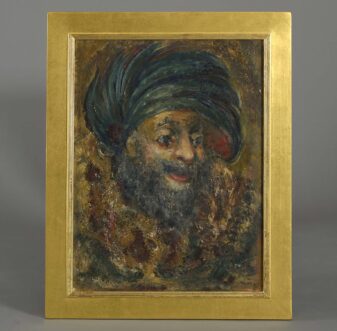Studio of Sir Godfrey Kneller, Portrait of Queen Anne
£5,500
SOLD
Oil on canvas; 30 ¼ by 24 ¾ in; 77 x 63 cm; held in an early 18th century carved wood frame
Provenance: Private Collection, England
Perhaps an unpromising commission for Kneller, Queen Anne was known for her plainness of appearance and by the time she ascended the throne of England, her looks had altered considerably since her earlier depiction as a young princess in 1684 by William Wissing (Scottish National Portrait Gallery). However what she lacked in beauty, she made up for in determination and fortitude; elements of character that Kneller clearly understood and highlighted in his commanding full length coronation portrait, (Inner Temple Collection, London) from which the present head and shoulders version is taken.
The new monarch looks out uncompromisingly with a proud, indomitable spirit, her head set with a crown, and her body adorned with the chain of The Most Noble Order of The Garter – symbols of continuity and regal strength. In every respect this is an image of majesty. After Queen Anne’s coronation and Sir Godfrey Kneller’s initial commission of 1703, his studio would have been requested to produce further examples of the same work. These would have been for royal patrons, courtiers, ambassadors and members of the gentry who were keen to show their allegiance to the new monarch. The larger three-quarter or full-length length versions found particular favour in civic settings and important institutions with the head and shoulders variant as seen here – in many respects more engaging – a much scarcer form.
Queen Anne was the second daughter of King James II by his first wife Lady Anne Hyde (1637-71). She was born at St James’s Palace in February 1665, the year before the Great Fire of London. She spent her early years in France living with her grandmother and aunt. While she was a Catholic, on the instruction of Charles II, Anne and her sister Mary were raised Protestants. In 1683, Anne married Prince George of Denmark (1653-1708). It was a happy marriage, yet marred by frequent miscarriages, still births and the death of children in infancy: five of her eighteen children were born alive and none of them reached maturity.
When James II was overthrown in 1688, Anne’s sister Mary, and her Dutch husband William, took the Throne. Anne automatically became their heir should they have no children. Upon their deaths, Anne became Queen in 1702. Within months, the War of the Spanish Succession began and a series of military victories by John Churchill, Duke of Marlborough, including the Battle of Blenheim, strengthened England’s negotiating position. By the conclusion of the war under the 1713 Treaty of Utrecht, France finally recognised Anne’s title over that of James II’s Roman Catholic son, James Stuart and confirmed England’s possession of Gibraltar.
The last years of the 17th century had seen differing policies pursued by parliaments in England and Scotland, including disagreements over the order of succession. The solution which was negotiated ultimately led to the unification of England and Scotland in May 1707, as a single kingdom and Anne became the first sovereign of Great Britain. Politically, the rest of her reign was marked by the development of the two party system in Parliament, with the Whigs and Tories competing for control in government.
Anne resented the great expense of Marlborough’s campaigns, and in this she was essentially in agreement with Tory policy. In addition, she found the Whig philosophy to be distasteful, particularly for its encroachments on the prerogatives of the monarch. As such, Anne hoped to rule through mixed ministries; however, in 1708 the Whigs became dominant. Her own sympathies had always lain ultimately with the Tory party and she supported their administration when there was a major shift in 1711 until her death in August 1714. Her only surviving son, William, died in 1700, prompting parliament to pass the Act of Settlement (1701) to ensure a Protestant succession. Anne was therefore succeeded by the German Protestant, Prince George, Elector of Hanover as the Stuart Dynasty gave way to a new order.

